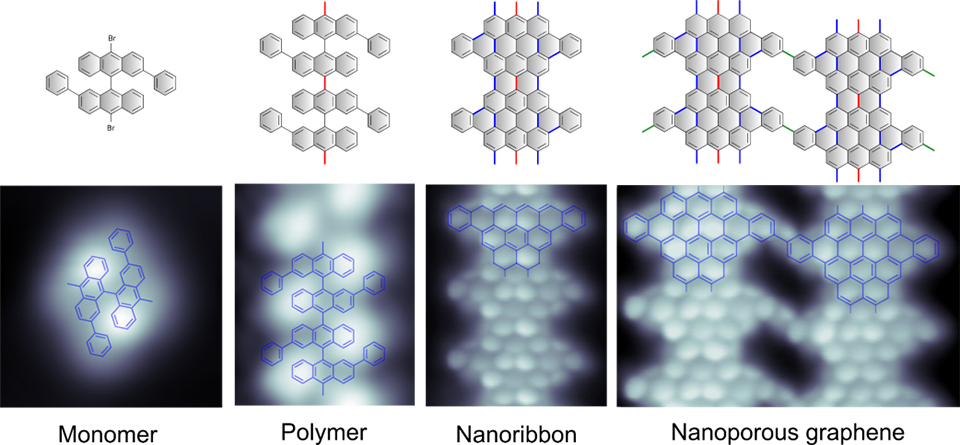Nanosize pores can turn semimetallic graphene into a semiconductor, and from being impermeable into the most efficient molecular-sieve membrane. These emerging properties places nanoporous graphene at the focus of different fields of science and technology due to its potential application as active component of electronic and photonic devices, or as an atom-thick selective nanosieve for sequencing, ion transport, gas separation, and water purification.
The challenge is to nanostructure graphene with the right dimensions and the required precision. Room temperature semiconducting applications require gaps that can only be achieved by narrowing the graphene stripes between pores below ~3 nm. Likewise, selectivity in molecular sieving requires pores of similar size. At this scale, gap homogeneity and sieving selectivity can only be achieved with atomic scale structural homogeneity, a resolution that is not accessible to top-down nanofabrication techniques (a fluctuation of a single carbon atom in the width of a graphene stripe of this scale can lead to gap variations as large as 50%).
Inspired by on-surface routes to synthesize covalent carbon-based nanostructures, we have devised a bottom-up strategy for the formation of nanoporous graphene that exhibits both semiconducting and nanosieving functionalities. The hierarchical method consists on a series of thermally activated reaction steps that lead first to parallel arrays of nanoribbons that later couple to form the nanoporous material. Using this holey graphene, we have fabricated field-effect transistors with on/off ratios 3 orders of magnitude larger than those achieved with standard, continuous graphene.
References
